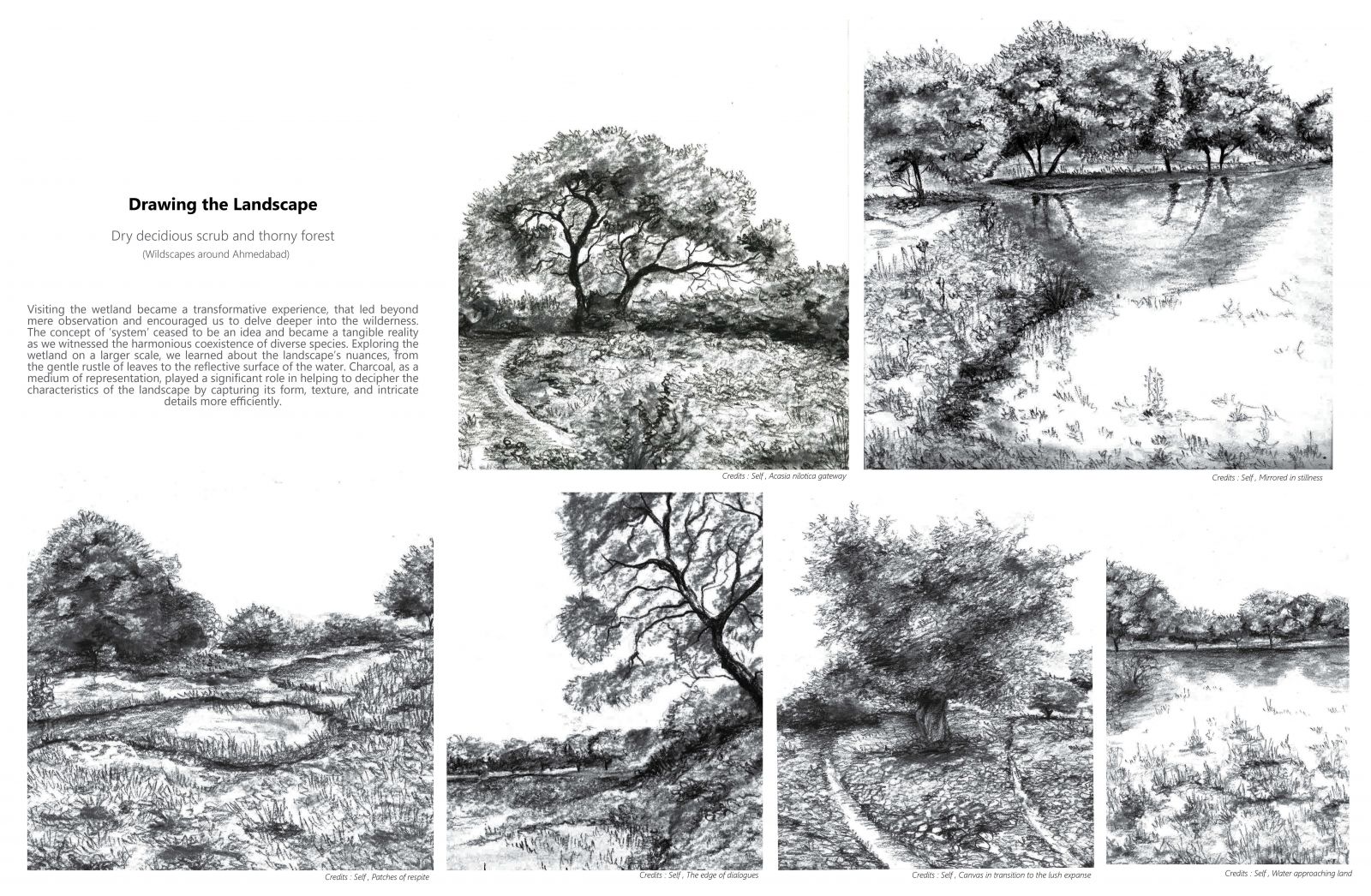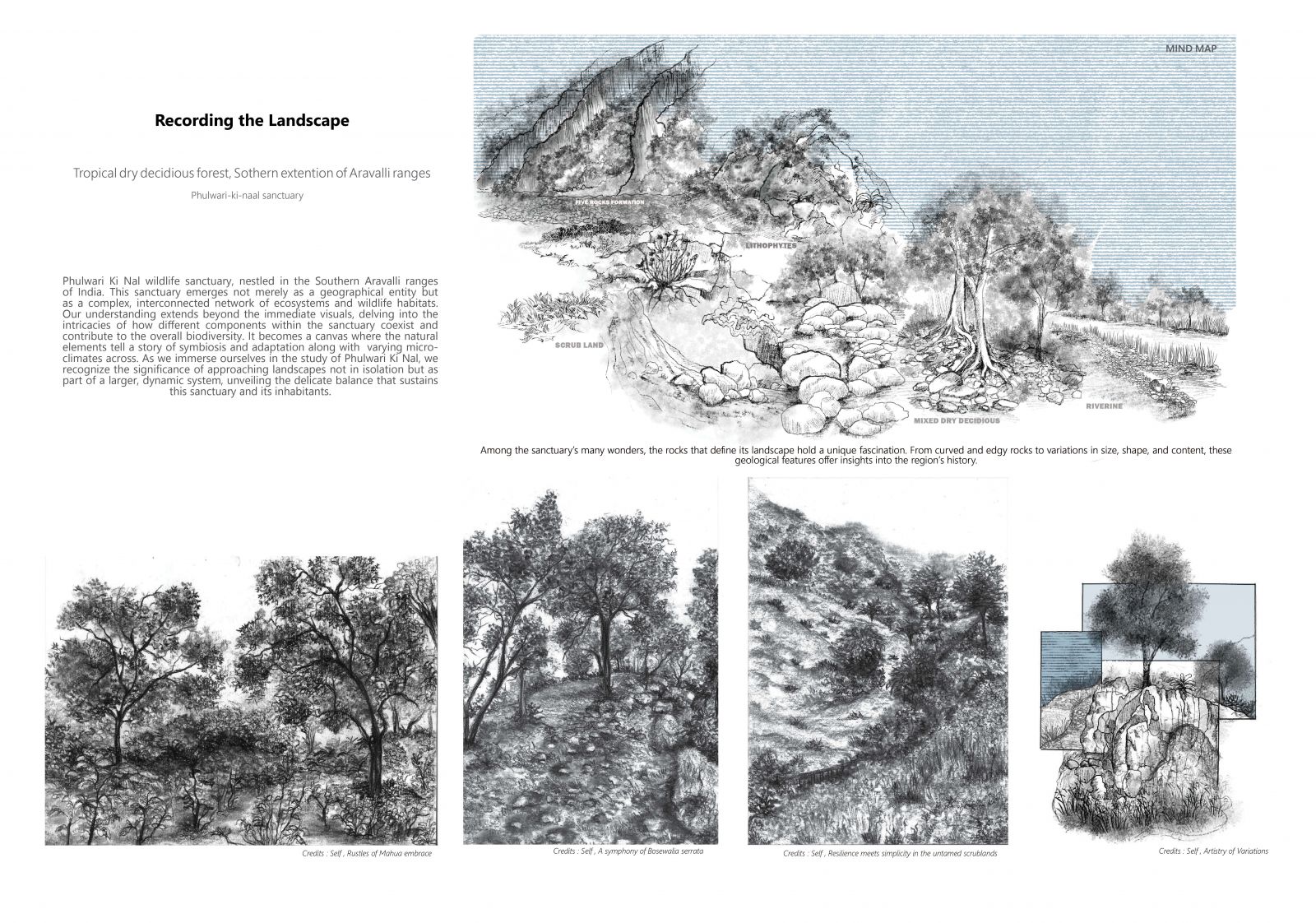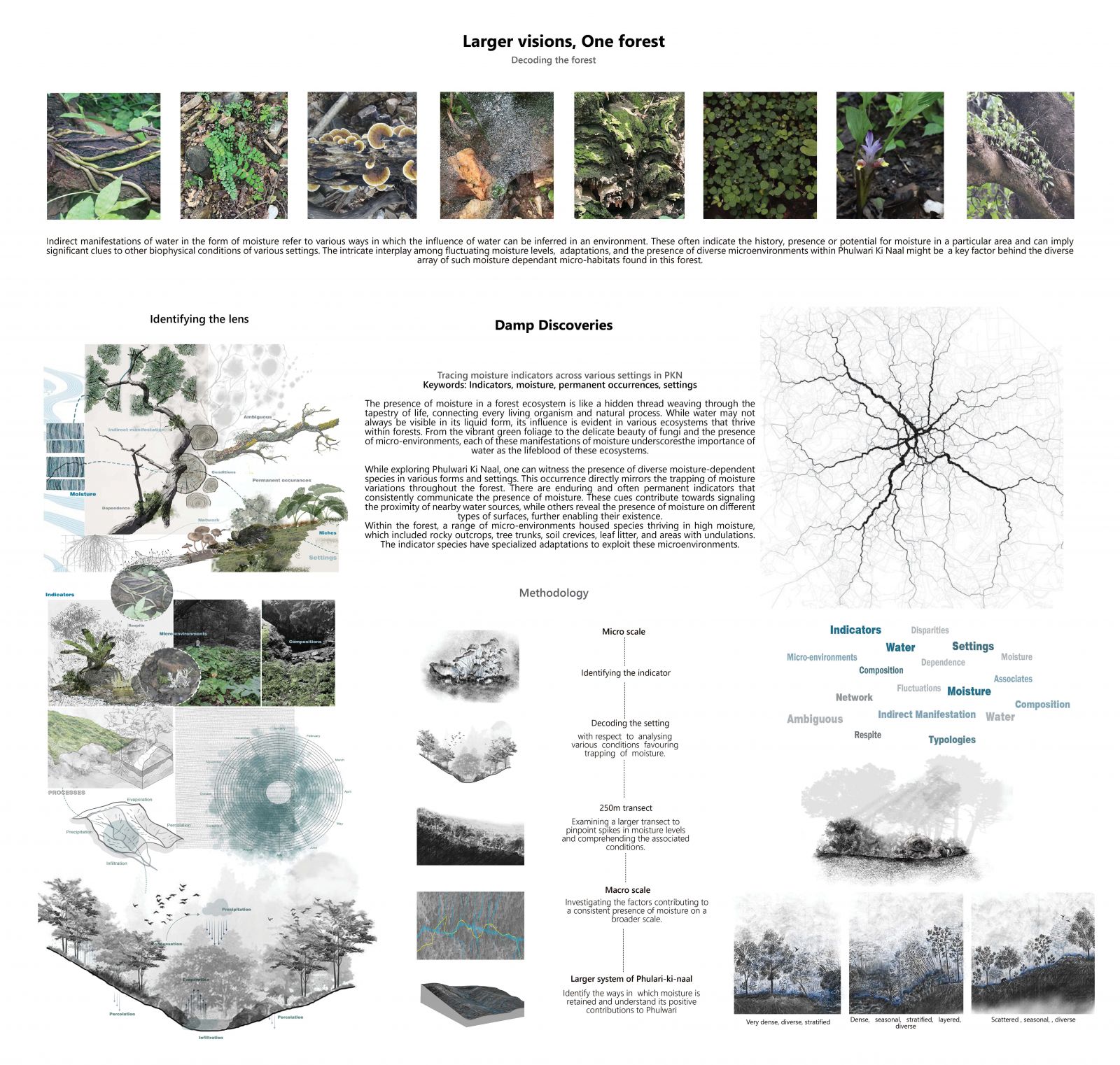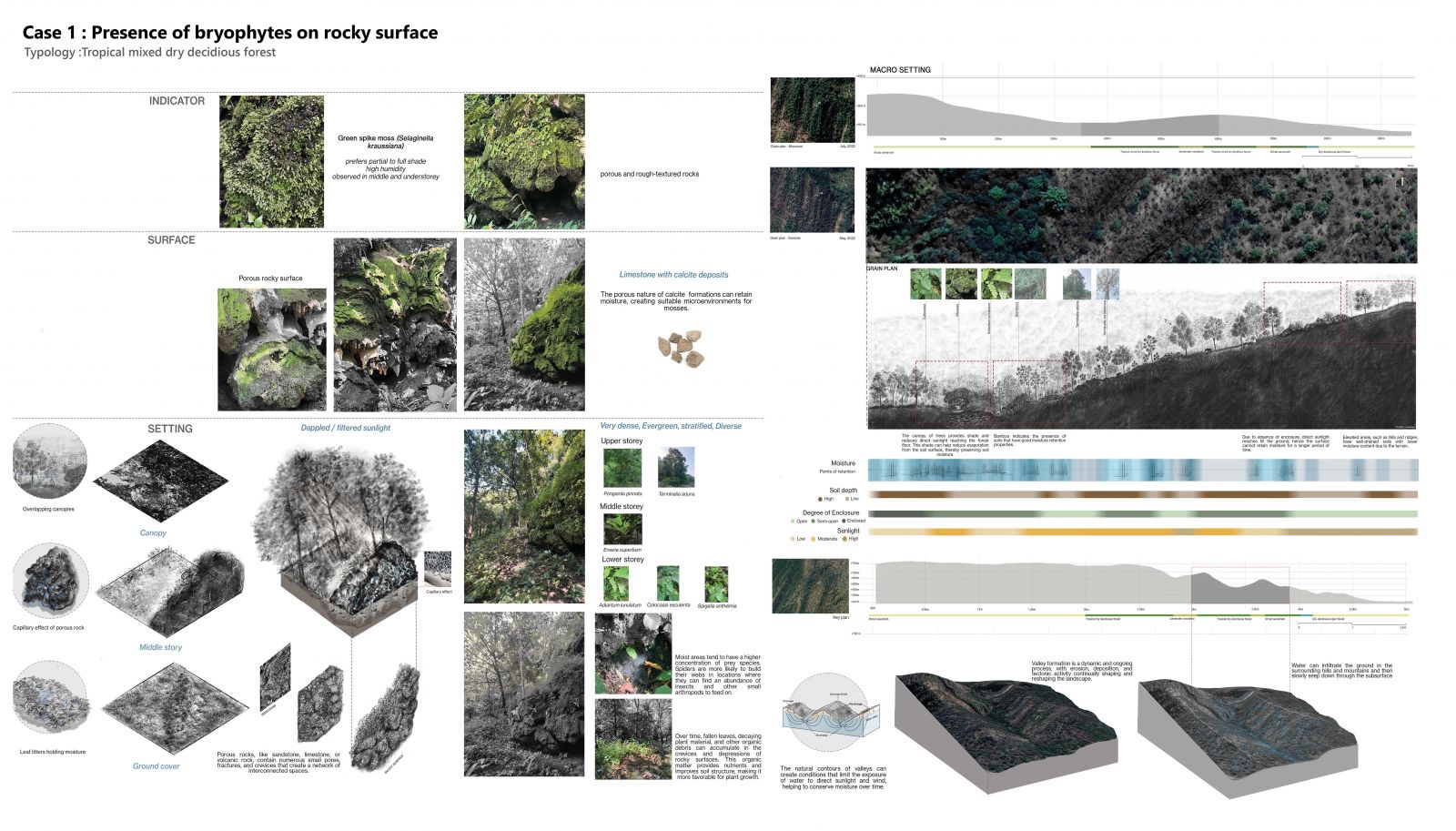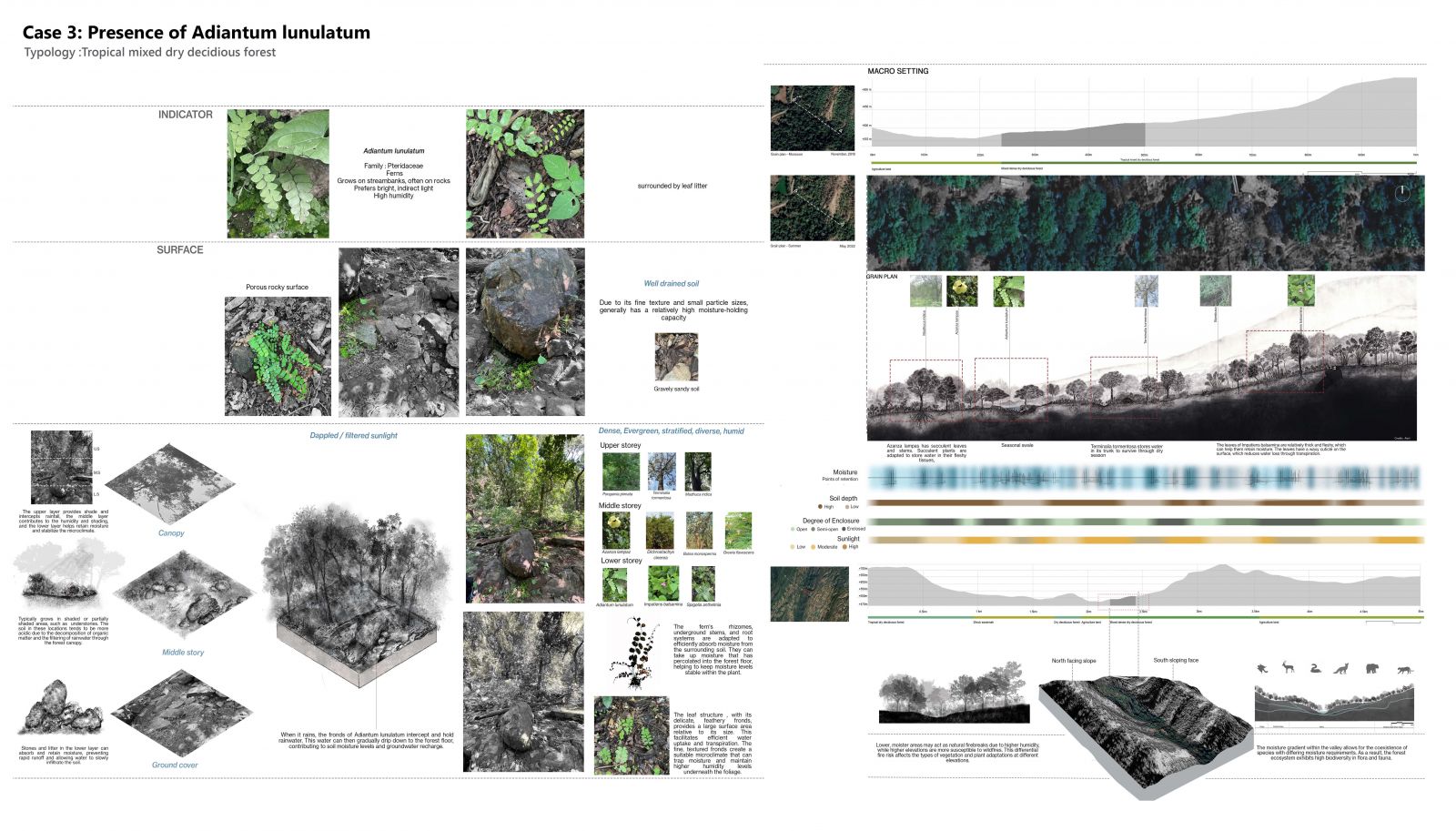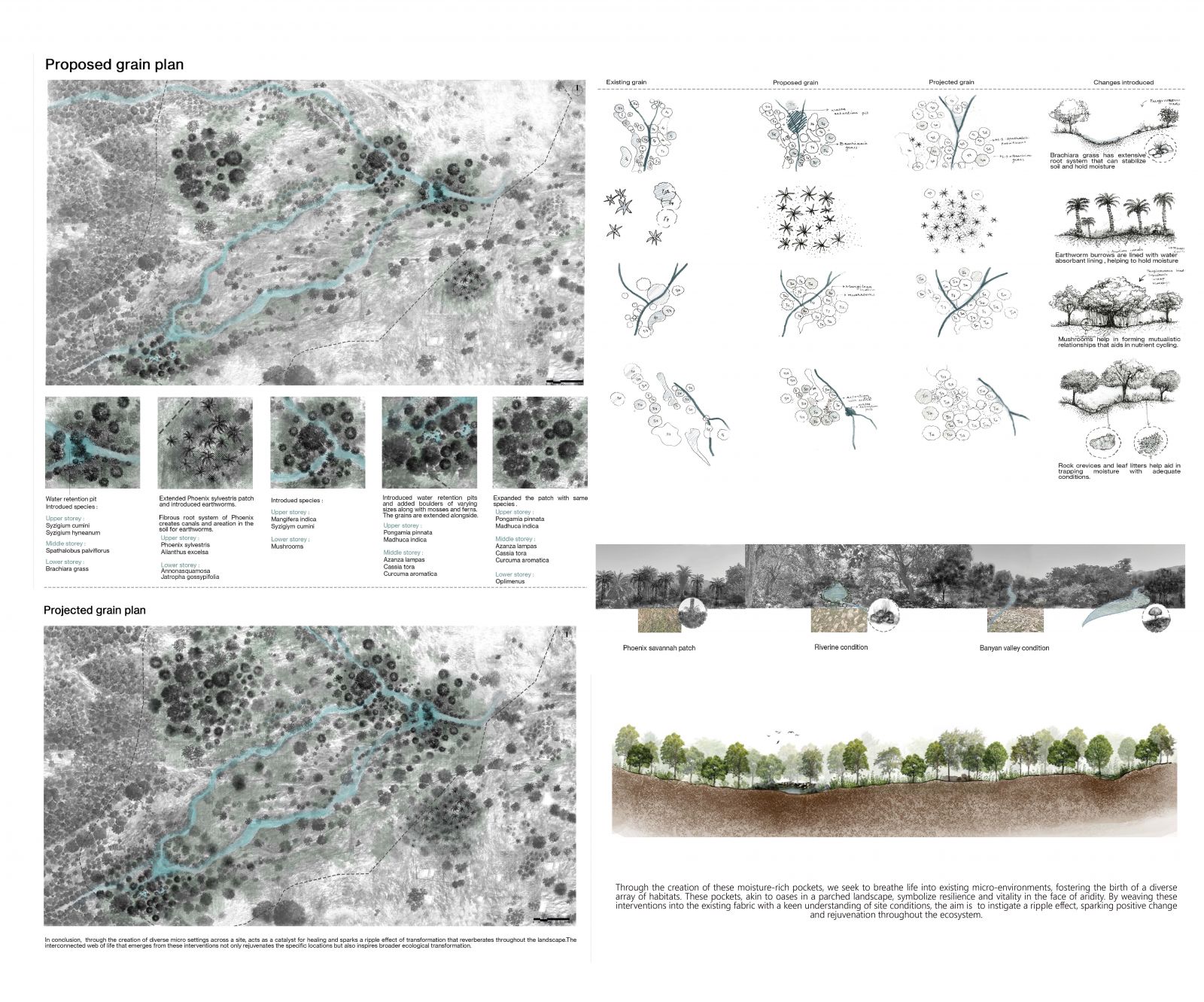- Student NEENA NASEEM
- Code PLA23234
- Faculty Architecture
- Tutor/s Nikhil Dhar,Rushika Khanna,Prasanna Mattikop,Priyal Shah
The presence of moisture in a forest ecosystem is like a hidden thread weaving through the tapestry of life, connecting every living organism and natural process. While water may not always be visible in its liquid form, its influence is evident in various ecosystems that thrive within forests. From the vibrant green foliage to the delicate beauty of fungi and the presence of micro-environments, each of these manifestations of moisture underscores the importance of water as the lifeblood of these ecosystems. Indirect manifestations of water in the form of moisture refer to various ways in which the influence of water can be inferred in an environment. These often indicate the history, presence, or potential for moisture in a particular area and can imply significant clues to other biophysical conditions of various settings. While exploring Phulwari Ki Naal, one can witness the presence of diverse moisture-dependent species in various forms and settings. This occurrence directly mirrors the trapping of moisture variations throughout the forest. There are enduring and often permanent indicators that consistently communicate the presence of moisture. These cues contribute towards signaling the proximity of nearby water sources, while others reveal the presence of moisture on different types of surfaces, further enabling their existence. Within the forest, a range of micro-environments housed species thriving in high moisture, which included rocky outcrops, tree trunks, soil crevices, leaf litter, and areas with undulations. The indicator species have specialized adaptations to exploit these microenvironments.
